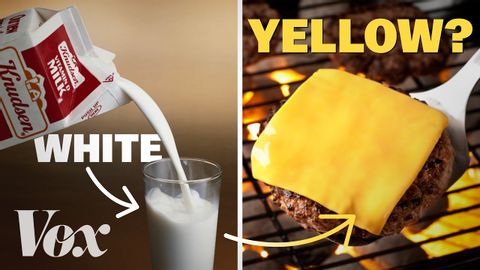不能是白色或是其他顏色嗎?為什麼起司的顏色是「黃色」的? (The real reason cheese is yellow)
VoiceTube 發佈於 2024 年 10 月 23 日  沒有此條件下的單字
沒有此條件下的單字US /pɚˈsɛpʃən/
・
UK /pəˈsepʃn/
- n. (c./u.)知覺;感知;知覺;理解;看法;觀點;信念;洞察力
US /ˈprɑsˌɛs, ˈproˌsɛs/
・
UK /prə'ses/
- v.t.用電腦處理(資料);(依照規定程序)處理;處理;流程;加工;理解
- n. (c./u.)(規定的)程序;過程;進程;方法;法律程序;進程
US /ˈkɑnˌtɛnt/
・
UK /'kɒntent/
- adj.滿足的;滿意的
- n. (c./u.)內容;主題;內容;滿意;內容 (數位);含量
- v.t.使…滿足
- v.i.同意
